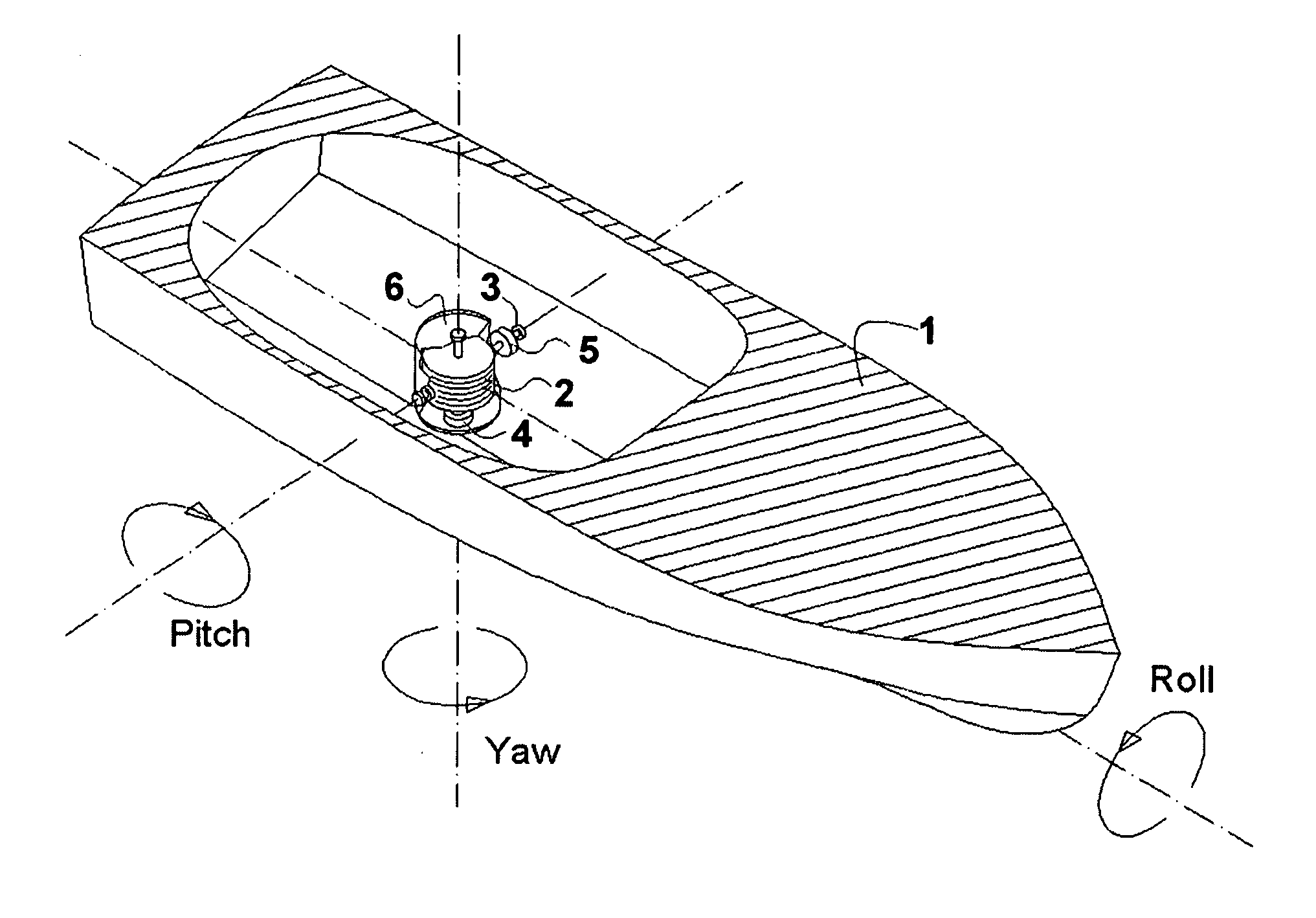Gyrostabilizer for small boats
a gyroscope and stabilizer technology, applied in special-purpose vessels, instruments, transportation and packaging, etc., can solve the problems of inefficient low-speed operation, people and animals experiencing motion sickness, and prior gyroscope-related anti-rolling systems that are too large for relatively small vessels, so as to reduce the time required for the drum, reduce the angular momentum of the machine, and increase the counter-roll torque
- Summary
- Abstract
- Description
- Claims
- Application Information
AI Technical Summary
Benefits of technology
Problems solved by technology
Method used
Image
Examples
fifth embodiment
the gyrostabilizer system is the same as the first embodiment shown in FIG. 1, with the addition of a roll angle accelerometer. Information from the roll angle position, angular rate and angular acceleration are used by the control system to control the gimbal servo motor.
sixth embodiment
the gyrostabilizer system is the same as the second embodiment shown in FIG. 7, with the addition of a roll angle accelerometer. Information from the roll angle position, angular rate and angular acceleration are used by the control system to control the gimbal servo motor.
fourth embodiment
the drum is that the drum and supporting webs are built as one continuous component using filament-wound composite construction.
PUM
 Login to View More
Login to View More Abstract
Description
Claims
Application Information
 Login to View More
Login to View More - R&D
- Intellectual Property
- Life Sciences
- Materials
- Tech Scout
- Unparalleled Data Quality
- Higher Quality Content
- 60% Fewer Hallucinations
Browse by: Latest US Patents, China's latest patents, Technical Efficacy Thesaurus, Application Domain, Technology Topic, Popular Technical Reports.
© 2025 PatSnap. All rights reserved.Legal|Privacy policy|Modern Slavery Act Transparency Statement|Sitemap|About US| Contact US: help@patsnap.com



